Banska Stiavnica is a place you’ve probably never heard of, but don’t let that fool you. This small Slovak town is hiding some of the biggest surprises in Europe. Unless you’re a history lover, a Slovakian local, or someone who searches UNESCO’s World Heritage list for travel inspiration, this stunning town may have escaped your radar. For centuries, every king and emperor in Europe knew this town’s name. This Slovak town wasn’t just any town – it was one of the richest places in the world, overflowing with silver. Today, it’s one of Slovakia’s most breathtaking destinations– a town filled with medieval charm, gorgeous views, and a rich history that shaped Europe.
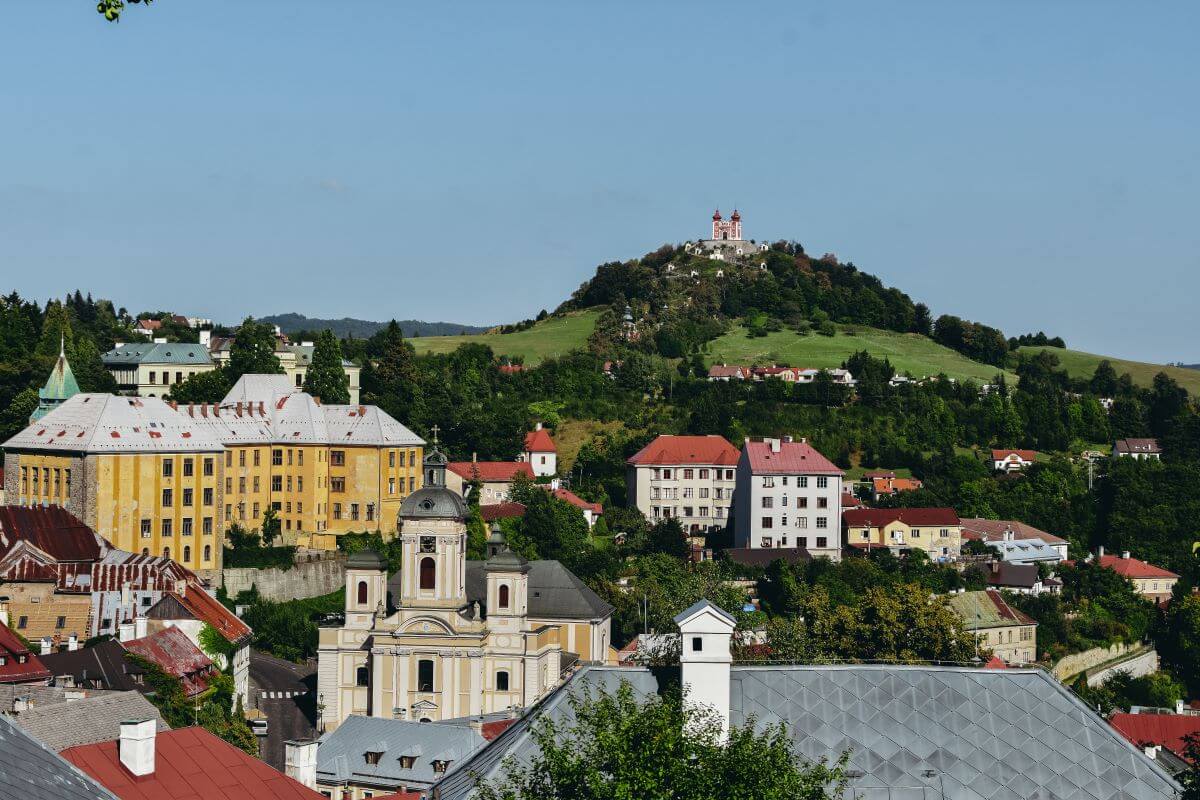
Why is Banska Stiavnica special?
Few towns can say they were built inside a volcano, but Banska Stiavnica can. Millions of years ago, this area was home to Central Europe’s largest volcano. When it erupted, it left behind a giant crater, known as a caldera, where the town now sits.

The volcano shaped the land forever and gave it a dramatic beauty. Today, Stiavnica’s hilly landscape and steep streets are a reminder of the volcano’s explosive past.
Why is Banska Stiavnica famous?
Once upon a time, Banska Stiavnica was Europe’s El Dorado, the heart of Europe’s mining industry. Nicknamed the Silver Town, it was the mining capital of the Habsburg Monarchy. The riches from its mines built grand palaces in Vienna and Budapest, and for centuries, the monarchy depended on this town’s wealth.

Silver and gold ran deep beneath the ground, making this one of the wealthiest towns in medieval Europe.
Is Banska Stiavnica worth visiting?
Absolutely. This beautifully preserved town is a UNESCO World Heritage Site and an excellent day trip from Bratislava. Slovaks and Czechs adore Banska Stiavnica, and for good reason. It’s a mecca for romantics and a weekend getaway paradise. With its rich history, stunning countryside, and breathtaking views it’s the perfect hidden gem for everyone looking for something extraordinary.

It is easy to see what draws thousands of visitors to the city.
How to get to Banska Stiavnica
Banská Štiavnica may be a hidden gem, but getting there takes a little effort. Just 2 hours from Bratislava, but don’t expect an easy hop-on, hop-off ride. Strangely, there’s no direct connection, so you’ll need a train to Zvolen, a major transport hub linking Bratislava, Prague, and Budapest. From Zvolen, hop on a local bus or drive. If you’re coming by car, prepare for steep climbs and winding roads. Even from Budapest, a quick 2-hour drive (145 km) makes this a perfect weekend escape.

When is the best time to visit?
For the best experience, visit between May and September. The days are longer, the weather is perfect, and the town is alive. Warm, sunny days make tajchs (old mining lakes) perfect for swimming, while the Štiavnica Mountains offer fantastic hiking trails. Plus, museums stay open almost every day, making it the ideal time to explore both nature and history.

Wonderful things to do in Banska Stiavnica
We are Slovaks who have visited Banska Stiavnica many times, exploring its history, hidden corners, and best-kept secrets. This article is not just another travel guide—it is a deep dive into one of Slovakia’s most breathtaking UNESCO sites. Every fact, tip, and recommendation comes from firsthand experience and a deep love for this extraordiary Slovak town. Whether you’re looking for history, adventure, or romance, we offer the best insights to help you experience Banska Stiavnica like a local.
1. Exploring the Old Town Centre

If you only have time for one walk in Banska Stiavnica, make sure it’s through the Old Town Centre. This UNESCO-listed area is packed with history, beauty, and a charm you won’t find anywhere else. Your first stop? Trotuár – the most famous street in the town. This lively promenade, lined with colourful middle-class houses, is the town’s beating heart. Here, you’ll find authentic restaurants with traditional Slovak cuisine and unique souvenir shops. Locals and visitors come here to drink coffee in the best cafes with sunny terraces. It’s the best place to experience the local atmosphere and authentic shops are everywhere.
But what makes Trotuár extra special? It’s not just a street; it’s a 140-m long elevated sidewalk, a historic symbol of Banská Stiavnica. Every visitor walks this street at least once, taking in the town’s beauty, energy, and centuries-old spirit.
2. Holy Trinity Square

Every great town has a centrepiece, and in Banska Stiavnica, that place is Holy Trinity Square (Námestie svätej Trojice). This square, shaped in the 16th century, became the heart of the town, where wealthy mining families built their grand homes. The plague column with the Holy Trinity sculpture, built in 1710–1711, dominates the centre. This ornate baroque monument was erected as a thank-you for survival after a deadly plague swept through the town.
Surrounding the square, you’ll see two rows of massive palaces that once belonged to the richest burghers in town. They transformed the original Gothic houses into stunning Renaissance residences. Look closely, and you’ll see family coats of arms above the gates, revealing the town’s aristocratic past. And here’s a surprising fact: Did you know these colourful houses sit on a giant 10 m-high pile of mining waste? That’s right—this proves how deeply Stiavnica is connected to its mining history.
Today, the square is a hub of activity. Visit the Church of St. Catherine, check out the mineralogical exhibition, and the tourist information centre. If you want to experience Stiavnica fully, get a guided tour of the town.
3. Marina’s House

A hidden gem for romantics
If you believe in true love, you must visit Marina’s House. Just a short walk from the main square, this historic home tells the real-life story of Slovakia’s greatest romance. This is not just another museum. It’s a shrine to love, dedicated to the longest love poem in the world and the real-life heartbreak that inspired it.
But First—Who Was Andrej Sládkovič?
In the 19th century, Slovak poet Andrej Sládkovič fell in love with a young woman from a different social class named Marina Pischlová. They wanted to marry, but Marina’s wealthy family had other plans for her. They forced her to marry a rich gingerbread maker, crushing her love for Andrej. Heartbroken, the poet poured his sorrow into a 2,900-line poem—Marina. 
Today, this world’s longest poem is Slovakia’s most famous love poem and a national literary treasure. Children still memorise some verses from this famous poem in Slovak schools.

BANSKA STIAVNICA – SLOVAKIA’S ‘NEW VERONA’
Marina’s House, a 15th-century home, is now a museum dedicated to this famous poem. It’s Slovakia’s version of Juliet’s Balcony—but unlike Romeo and Juliet, this love story is true. Locals call it the Epicentre of Love, and the museum’s exhibits and artefacts are one of a kind. Inside, you’ll find:
- Love Banks – The first safe in the world where couples can store their love letters and keepsakes.
- 100,000 tiny wooden boxes – One for every letter, space, and punctuation mark in the poem, turning it into a living love story.
- Love-O-Meter – A fun way to measure the strength of your love.
- Rare Exhibits – Original manuscripts, books, and artwork inspired by Marina’s tale.
- Sky of Love in the courtyard with eye-catching hearts

Love Banks
FUN FACT:
How many love stories can fit in one house? 100,000. Each love box represents a piece of the poem—turning Marina’s words into a physical space where love can be kept forever.
GOOD TO KNOW:
Location: Radničné námestie 18

In March 2023, a devastating fire destroyed parts of Marina’s House. Thankfully, the 100,000 Love Boxes survived (love is stronger than flames). Unfortunately, the museum is closed for now, but it will reopen in 2026.
4. Church of St Catherine

Church of St Catherine (Kostol Sv. Katariny)
Every visitor in Štiavnica walks past this small church when exploring the Old Town. But only a few know its story. Built between 1488 and 1500, St. Catherine’s Church is one of the town’s best-preserved late Gothic buildings, but its origins are truly unique.
By the late 1400s, the town was booming. Silver and gold flowed from the ground, and the city needed a new church. Banska Stiavnica already had two basilicas, which pointed to the town’s importance. However, unlike these two churches, St. Catherine’s Church wasn’t for nobles or peasants. It was for the a new, rising middle-class miners, who worked underground but dreamed of heaven. Since then, this corner church proved that the town no longer belonged only to the nobility. Inside, the rich Gothic details tell stories of faith and ambition. Time your visit just right, and you’ll see a breathtaking painting of the Last Judgement.
5. The Old Castle

The Old Castle (Stary Zamok) may look like a typical medieval fortress. But its story is much bigger.
The Old Castle, situated above the Trinity Square, is one of Banska Stiavnica’s most famous and the oldest landmarks. But this isn’t just a castle—it was once a church, a fortress, and a shield that saved the town from destruction.
WHY DID IT BECOME A FORTRESS?
In the 13th century, this place was just a peaceful parish church. But when the Turks threatened Slovakia, the townspeople transformed it into a fortress. They tore down the vaulting, built thick defensive walls, and added a watchtower, and a bastion. It became an unbreakable fortress, which guarded the city like a shield. The Turks tried, but they failed and this town never fell to invaders.
WHAT YOU CAN SEE TODAY:
Inside, you’ll find a museum, an archaeological exhibition, and a collection of medieval weapons. Don’t miss a blacksmith’s workshop and Slovakia’s oldest city document from 1275. Other highlights are a torture chamber and a tower which provides an unbeatable view of the town.
GOOD TO KNOW:
As of March 2025, the Old Castle is open every day except Mondays and Tuesdays. You can visit it between 9 AM and 5 PM (the last entry at 4 PM). Guided tours begin every hour, starting at 9 AM (cash only).
6. New Castle

At first glance, the whitewashed New Castle looks like a fairy-tale fortress standing high on Frauenberg Hill. However, this structure which stands opposite of the Old Castle, is just another fortress that helped save an entire region. The six-story Renaissance fortress with four round towers was designed to spot and stop enemies before they reached the gates. This wasn’t just a local defence, but a part of a larger warning system.
HOW IT WORKED:
The castle’s four massive towers weren’t just for show. They were part of an anti-Turkish military system. When invaders approached, guards on duty lit fires at night and sent smoke signals by day. Towns miles away knew danger was coming. A single guard in the watchtower could alert seven key mining towns. If one was attacked, they all knew.

WHAT’S INSIDE?
Today, the New Castle is a museum. Inside, find an exhibition of rare weapons, and Hungarian and Turkish military artefacts. Don’t miss a seven-barreled cannon from the 16th century and the top-floor viewing platform. The lookout tower offers breathtaking views of Banská Štiavnica’s UNESCO skyline.
GOOD TO KNOW:
As of March 2025, the New Castle is not open on Mondays and Sundays. You can visit it between 9 AM and 5 PM (cash only).
7. Klopačka Tower

This mining timekeeper is one of the last of its kind.
The Klopačka Tower is a beautiful Renaissance-Baroque building built in the 17th century. However, it’s more than an unusual landmark. Long before alarms or loudspeakers, miners relied on a knocking signal to start their work. At exactly 2:30 AM, the sound echoed across the town, calling them underground. The knocking at the wooden board inside the tower wasn’t just about the morning shift. Different patterns meant different things—a fire, a mining accident, an enemy attack, or even a funeral. The Klopačka Tower was the voice of the town. This system existed in several mining towns, but today, only seven knockers are left in Slovakia.
Only a few people know that the ground floor of Klopačka was once a prison for miners who broke the rules. Today, this historic tower has a new purpose—it’s a cosy tea house where you can relax and enjoy the atmosphere of this historic site.
8. Botanical Garden and the Mining Academy

A school that shaped an industry.
In the 18th century, Empress Maria Theresa of Austria made a bold decision. She founded the Mining Academy in Banská Štiavnica, the first technical university in the world. This school trained engineers and specialists who revolutionized mining. With high academic standards, the Academy’s graduates became top experts in mining, metallurgy, and chemistry. Its reputation was so strong that companies competed to hire its graduates. Behind the Academy, a Botanical Garden hides away massive ancient sequoias and rare Japanese cedars. It’s a peaceful escape and you can tour the gardens in about 30 minutes.
9. Calvary of Banska Stiavnica

Many foreign visitors explore only the Old Town and leave, never realizing they’ve missed one of the most breathtaking attractions in Slovakia. Just 40 minutes uphill lies one of the greatest Baroque Calvaries in Europe.
Built in 1744 by Jesuits, the Calvary was funded by the town’s citizens – you can still see their coats of arms displayed on the chapels. What they created is nothing short of a masterpiece: 23 chapels, three churches, and a network of paths and staircases that guide pilgrims through the most dramatic moments of Christ’s life. Before it was consecrated, Emperor Francis of Lorraine visited this pilgrimage site.

As you climb, the chapels reveal stunning frescoes, sculptures, and precious paintings. Each one tells a piece of the story, leading to the Holy Stairs inside the Central Church. These stairs are a replica of the very steps Jesus walked in Jerusalem in Pontius Pilate’s palace. Yet, strangely, they have six extra steps compared to the original which you can now see in Rome.
A VIEW YOU WON’T FORGET:
The climb is challenging, but those who make it to the summit of Scharfenberg Hill are rewarded with stunning views. The entire Štiavnica caldera stretches before your eyes. It’s a reminder that the massive volcanic crater shaped this land and that this town was once the heart of Europe’s richest mining empire. Binoculars in front of the church let you explore distant peaks. A mini-exhibition of weapons inside the Upper Church tells the story of wartime struggles which nearly destroyed this holy place.
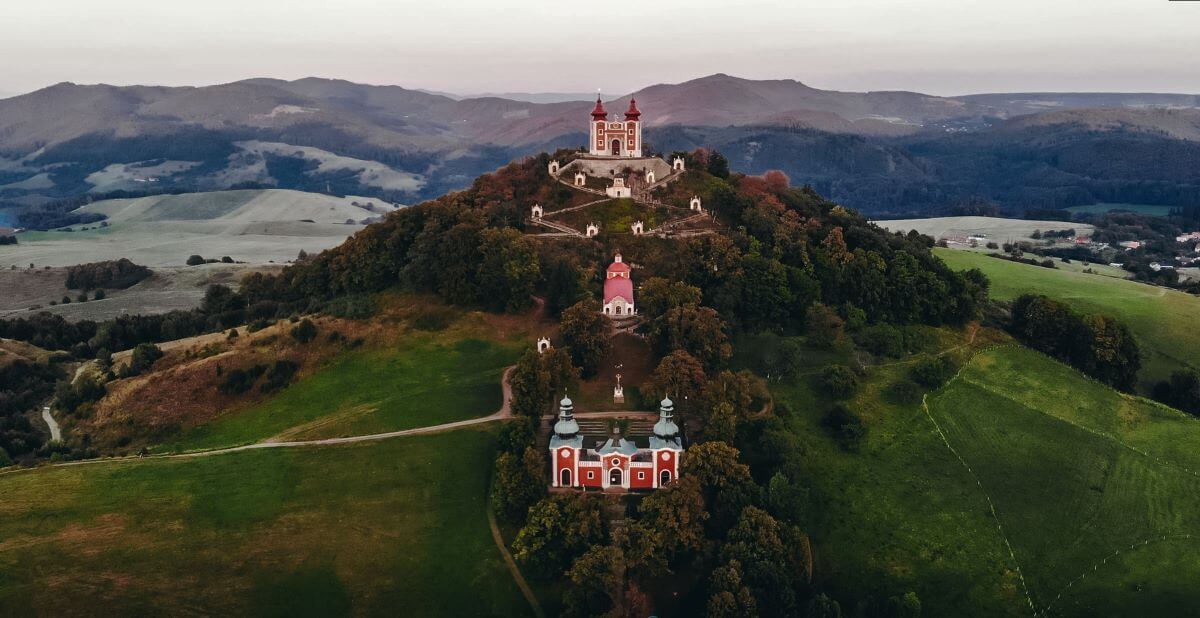
The Calvary at sunset.
GOOD TO KNOW:
The calvary is free to visit. The Tourist Information Centre at the bottom of the hill offers an exhibition, souvenirs, and guided tours. The churches and chapels are open daily in summer and on weekends for most of the year.
10. Tajch Veľká Vodárenská

Did you know that Stiavnica’s lakes aren’t natural? They are a 300-year-old engineering masterpiece. These man-made reservoirs, called tajchy, are one-of-a-kind water systems, built to keep the booming mines running. In the 18th century, this city was one of Europe’s wealthiest mining towns. But miners faced an impossible problem—the region didn’t have enough water to power its massive silver and gold mines. Instead of giving up, genius engineers built an intricate system of reservoirs. They collected rainwater from mountain slopes and stored it in vast artificial lakes. It was so advanced that nothing like it had been built before in Europe.
SWIMMING SPOTS:
At its peak, over 60 tajchy covered the region. Today, only 24 remain, but they have a new purpose: they are now some of Slovakia’s most beautiful swimming spots, perfect for summer relaxation. A 15-minute walk from Holy Trinity Square brings you to Velká Vodárenská tajch, the oldest reservoir, famous for its breathtaking turquoise colour. After a dip, continue to Červená Studňa, another hidden oasis in the hills.
GOOD TO KNOW:
The tajchy are free to visit, and many are perfect for swimming. The lakes remain refreshingly cool all summer, making them the perfect escape from the heat.
11. Open-air Mining Museum
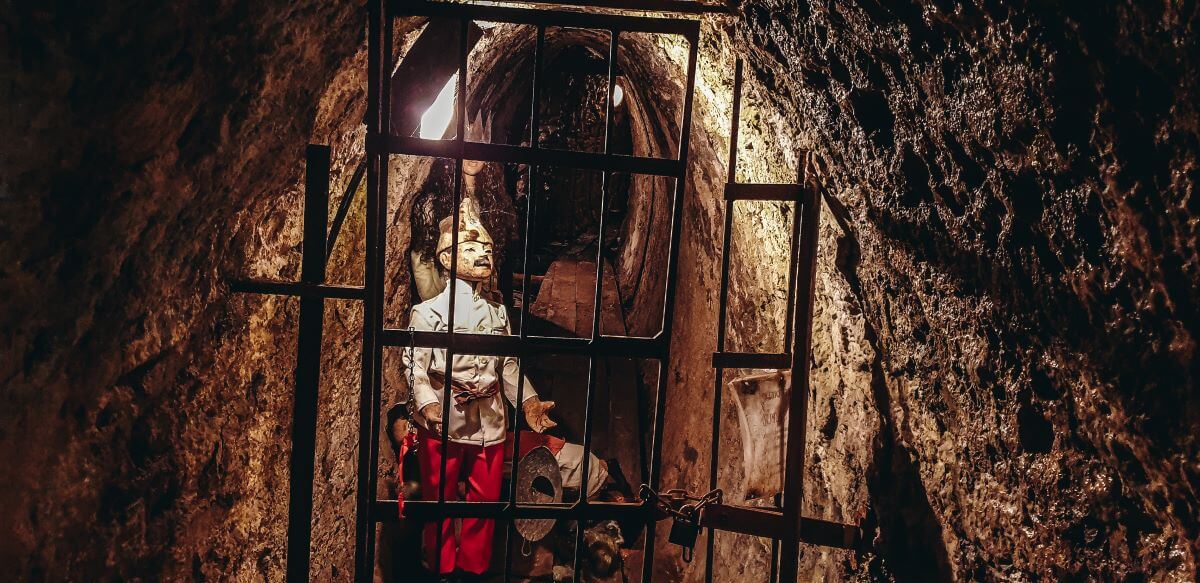
Have you ever wondered what it feels like to work deep underground, surrounded by nothing but darkness and rocks? For centuries, miners risked their lives, extracting silver and gold from the earth. Now, you can follow in their footsteps at the Open-Air Mining Museum (Banske Muzeum v prirode in Slovak).
Exploring the Open-air Mining museum is one of the best things to do in Banska Stiavnica because this one-of-a-kind museum offers an unforgettable underground experience. You’ll put on a helmet and cloak before stepping into the Bartolomej Tunnel, a dark, damp passage that takes you back in time. You’ll learn how miners extracted silver from deep inside the mountains and discover the machines that powered one of Europe’s wealthiest mining towns.
WHAT YOU’LL SEE:
- The Underground Tour – Walk through the original tunnels and see the only preserved horse-powered mining elevator in Slovakia.
- The Surface Exhibition – Explore massive mining machines, including the legendary Kachelman water-column machine, which once saved the town’s mines from collapse.
GOOD TO KNOW:
- OPENING TIMES: As of March 2025, the Open-air Museum in Stiavnica is open from Wednesday to Sunday. Entry at 9 AM, 12 PM, 3 PM.
- ENTRY FEE: A ticket to the museum costs €14 for adults, kids pay €7 and a family can visit for €35. The tour lasts 90-100 minutes. Don’t forget to bring warm clothes and solid shoes – It’s colder underground.
12. Kammerhof

Most visitors rush to the famous mines, but they miss the place where it all was controlled—the Kammerhof. This Renaissance-era complex was once the powerhouse of Slovak mining, where officials controlled one of the most valuable mining industries in Europe. Here, the official weighed, tested, and registered silver before it reached the royal mint in Kremnica. It was so important that thick fortifications were built to protect its wealth from Ottoman raids—and you can still see these defensive walls today.
WHAT TO EXPECT:
- The “Mining in Slovakia” Exhibition: See the entire mining process. Learn how miners discovered ore, mapped tunnels, and used giant water pumps and compressed air systems to extract precious metals.
- Working Mining Models – See how miners transported tons of rock without electricity or modern tools. Get a close look at the tools, lamps, and maps that guided miners underground.
TIP:
Visit Kammerhof before heading underground to the Open-air museum and Bartholomew Tunnel. You’ll understand mining on a whole new level and it helps you appreciate what you’ll experience below.
GOOD TO KNOW:
- ENTRY FEE: As of March 2025, a ticket to the Kammerhof costs €8 for adults, kids pay €1 and a family can visit for €20. The tour lasts approximately 90 minutes.
- OPENING TIMES: Closed on Sundays. You can visit the museum between 9 AM and 5 PM.
13. Hiking & Cycling in the Štiavnica Mountains
If you have any energy left after exploring history, get ready to breathe in fresh mountain air and explore the beautiful Štiavnica Mountains. This charming region offers some of the best hiking and cycling trails in Slovakia. Routes are perfect for both leisurely family rides and adrenaline-packed adventures. Many paths lead to hidden lakes, breathtaking viewpoints, and old mining roads—so don’t forget your camera.
THE BEST CYCLING ROUTES:
- Kopanická Osmička (The Eight of Kopanica) – A beginner-friendly ride with beautiful views of the rolling countryside.
- Hellov Okruh (The Circuit of Hell) – A thrilling but challenging loop for experienced cyclists.
Now you know what the best places to visit in Banska Stiavnica are!
Thank you for staying with us until the end! If you’ve enjoyed this article, please consider sharing this post to extend its reach.

Have you been here before? Which attraction did surprise you the most?
Pin Banska Stiavnica for later!
READ MORE ABOUT SLOVAKIA:
YOU MAY ALSO ENJOY:
Last updated: 03/03/2025

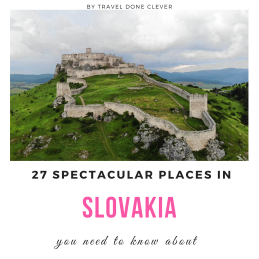


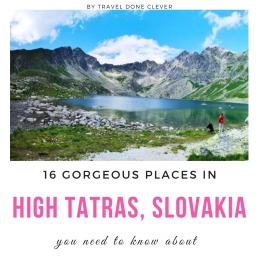

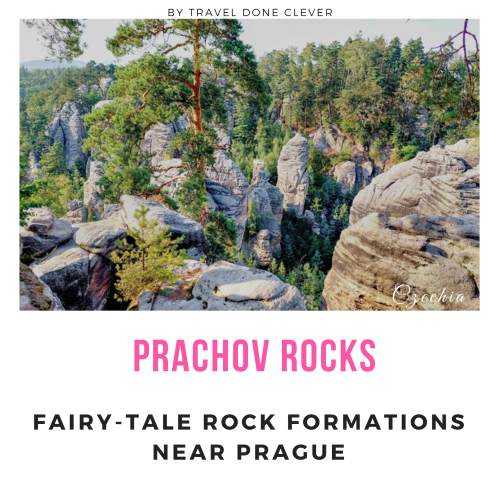

Never heard of this place, but it looks great!
Banska Stiavnica is a stunning medieval town full of secrets, you should definitely visit❣.
I’ve never even heard about Banska Stiavnica, and that’s why I love reading your travel blog. You always introduce your readers to many amazing and lesser-known places worth visiting and exploring. The Calvary caught my eye right away, It would be a perfect place to watch a sunset and sunrise! Ohh, how I miss Europe and its charming old towns. I miss traveling and eating new foods. Hopefully one day we can be back on the road again. Thanks for sharing and inspiring. Have a good weekend. Aiva xxx
Pingback: 27 Spectacular things to do in Slovakia - Travel Done Clever